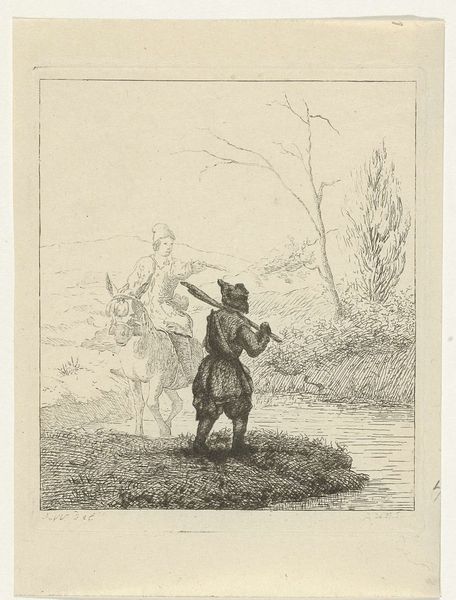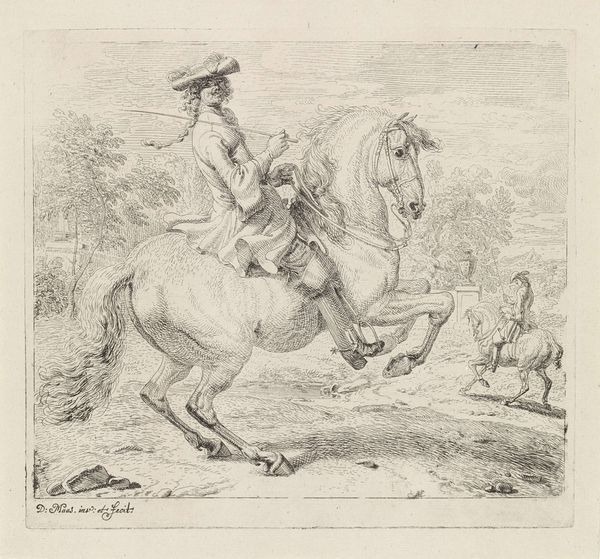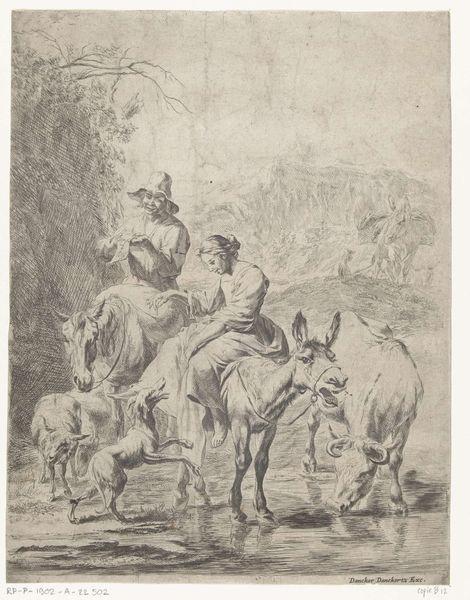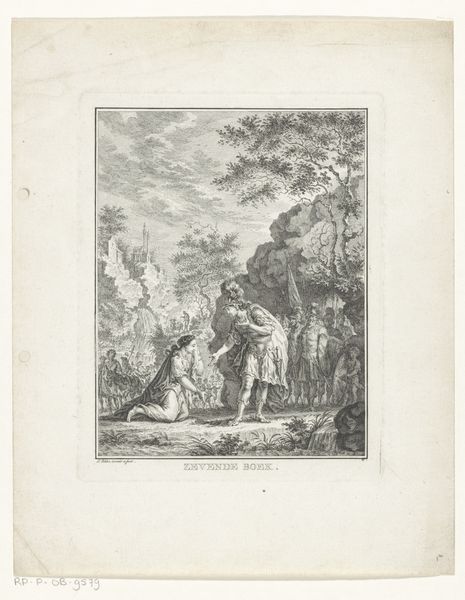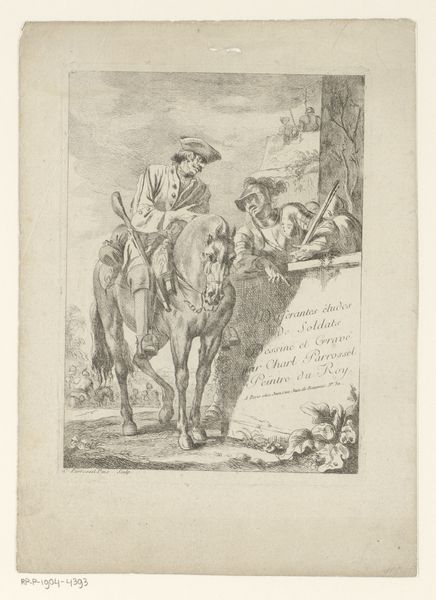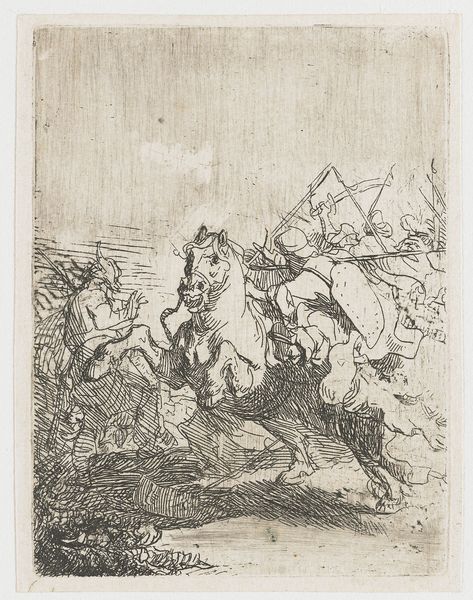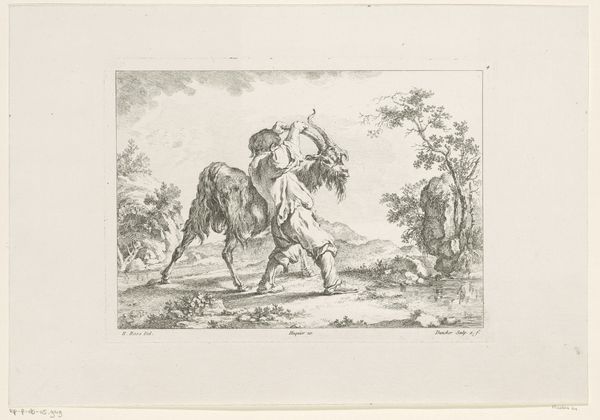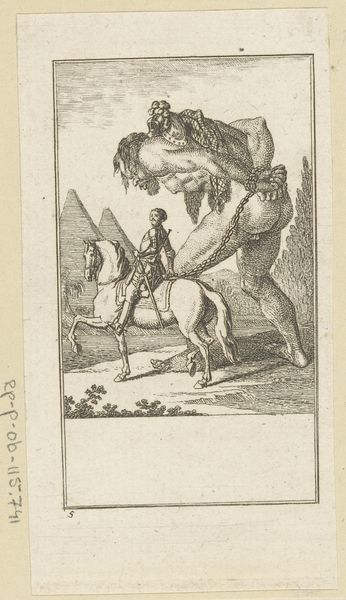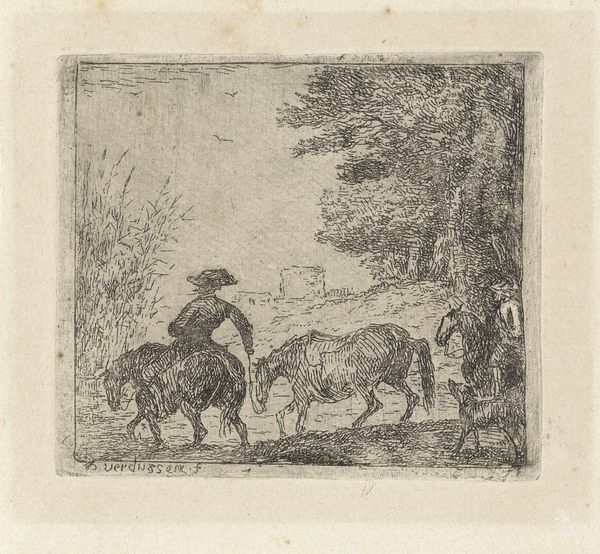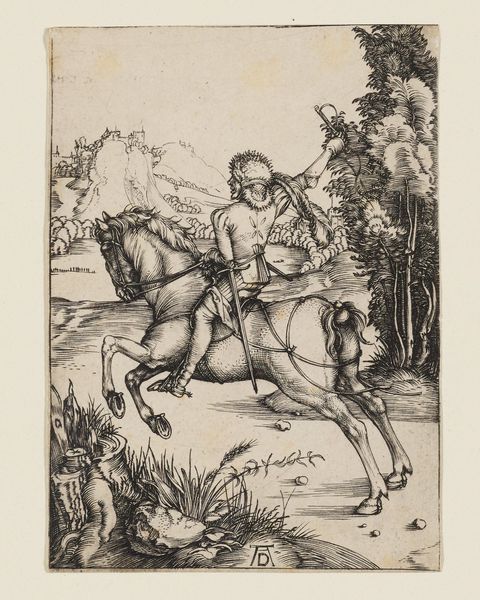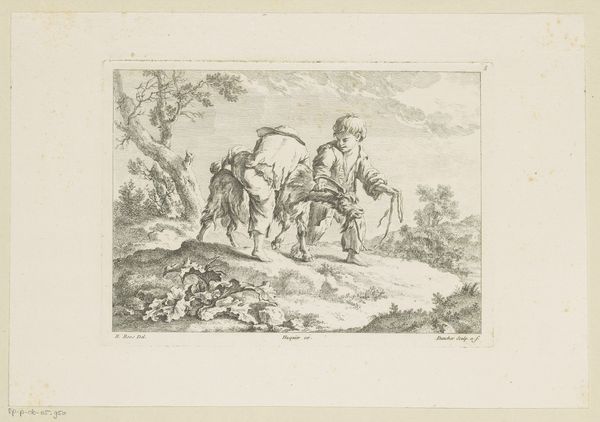
print, etching
# print
#
etching
#
landscape
#
genre-painting
Dimensions: height 108 mm, width 91 mm
Copyright: Rijks Museum: Open Domain
Curator: This etching, attributed to Reinierus Albertus Ludovicus baron van Isendoorn à Blois and created sometime between 1796 and 1856, is titled "Two Men by a River". It's a simple scene, typical of genre paintings of the time. Editor: There’s a definite charm to the stark lines and muted palette. The two figures—one on a donkey, the other walking—are bathed in an ethereal, almost ghostly light. It feels…incomplete somehow. Curator: That 'incomplete' feeling stems, perhaps, from its medium: an etching on paper. Think about the meticulous labor required to create such fine detail, to transfer a scene from plate to paper. How was the zinc plate sourced, processed, and etched? What acids were used, and who was involved in this whole production? This process would involve many anonymous hands in bringing van Isendoorn's vision to reality. Editor: Certainly, the material and means of production inform our understanding. But consider the composition. The artist masterfully guides our eye with delicate linework. The flow of the river is echoed by the sweeping branches of the trees on the right. What sort of discourse can be unveiled by examining such use of shape? The two men appear in front of us like an image reflected from a glass—revealing a tension between man and landscape that gives the artwork a structural base to it. Curator: That landscape, however idyllic, likely supported an entire rural economy. I’m curious about how the rural folk would react seeing an affluent rider exploiting an animal whilst ordering around a worker trudging along in the water? To what degree does this mirror, or perhaps distort, existing social hierarchies? The print would've been circulated among a specific demographic, reinforcing certain viewpoints. Editor: Social context informs, but I keep returning to the formal aspects. Note how the figures are placed asymmetrically, creating visual tension with the scenery that the artist uses. What kind of philosophy would have lead the artist to prefer a somewhat unsettling placement that reveals the artist’s state of mind? These sorts of reflections enrich how the viewers grasp its true aesthetic purpose. Curator: Perhaps understanding the distribution networks of prints during that period will enrich how viewers may perceive its purpose, wouldn’t you agree? By scrutinizing its economic roots we might be better situated in knowing to whom these sorts of depictions catered. Editor: Ultimately, I find this work remarkable in its balanced simplicity. A captivating interplay of forms allows the viewers a freedom in understanding it—both technically and philosophically. Curator: Indeed. This etching allows us a lens through which to consider not only artistic skill but the network of relationships and modes of production it implies.
Comments
No comments
Be the first to comment and join the conversation on the ultimate creative platform.
